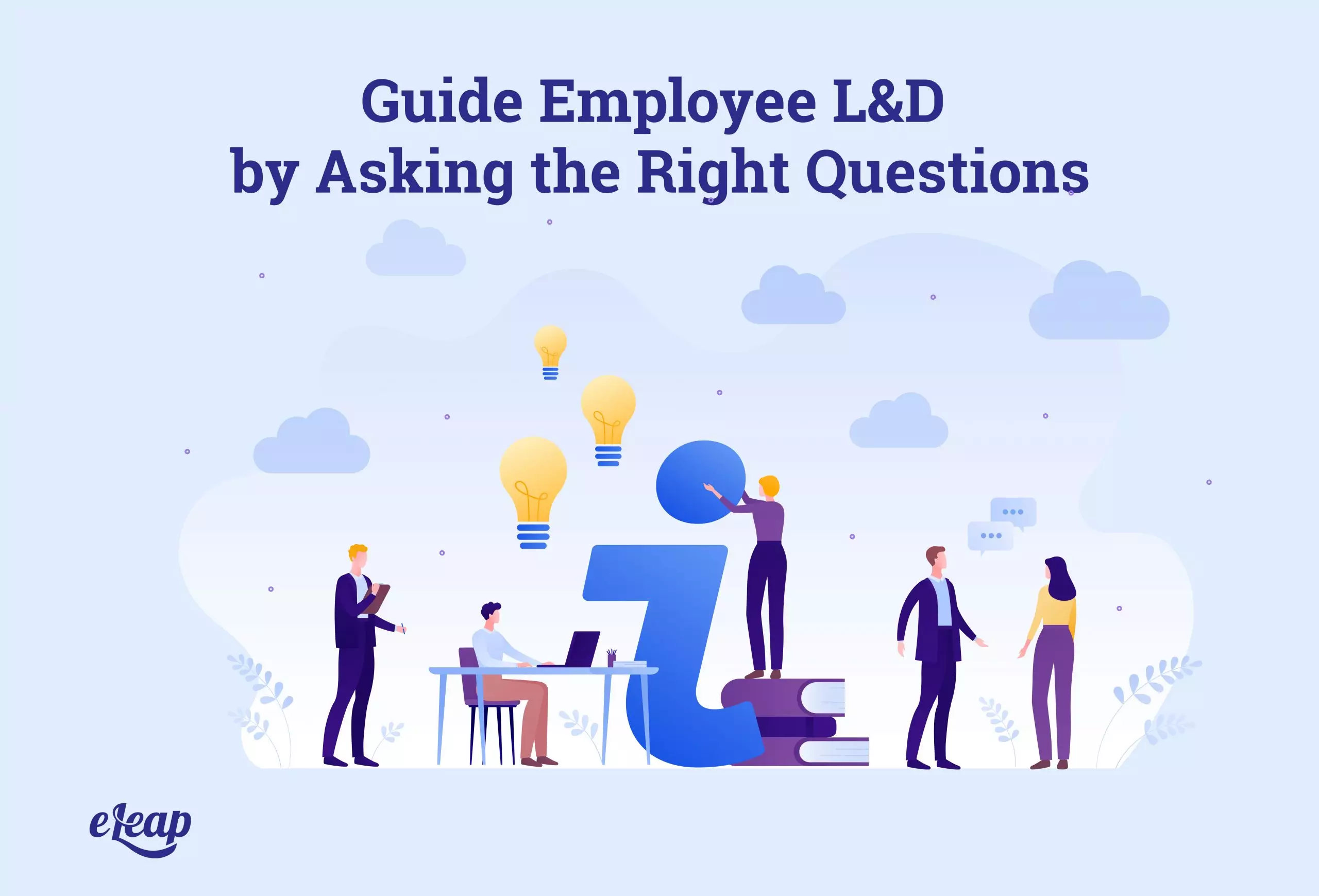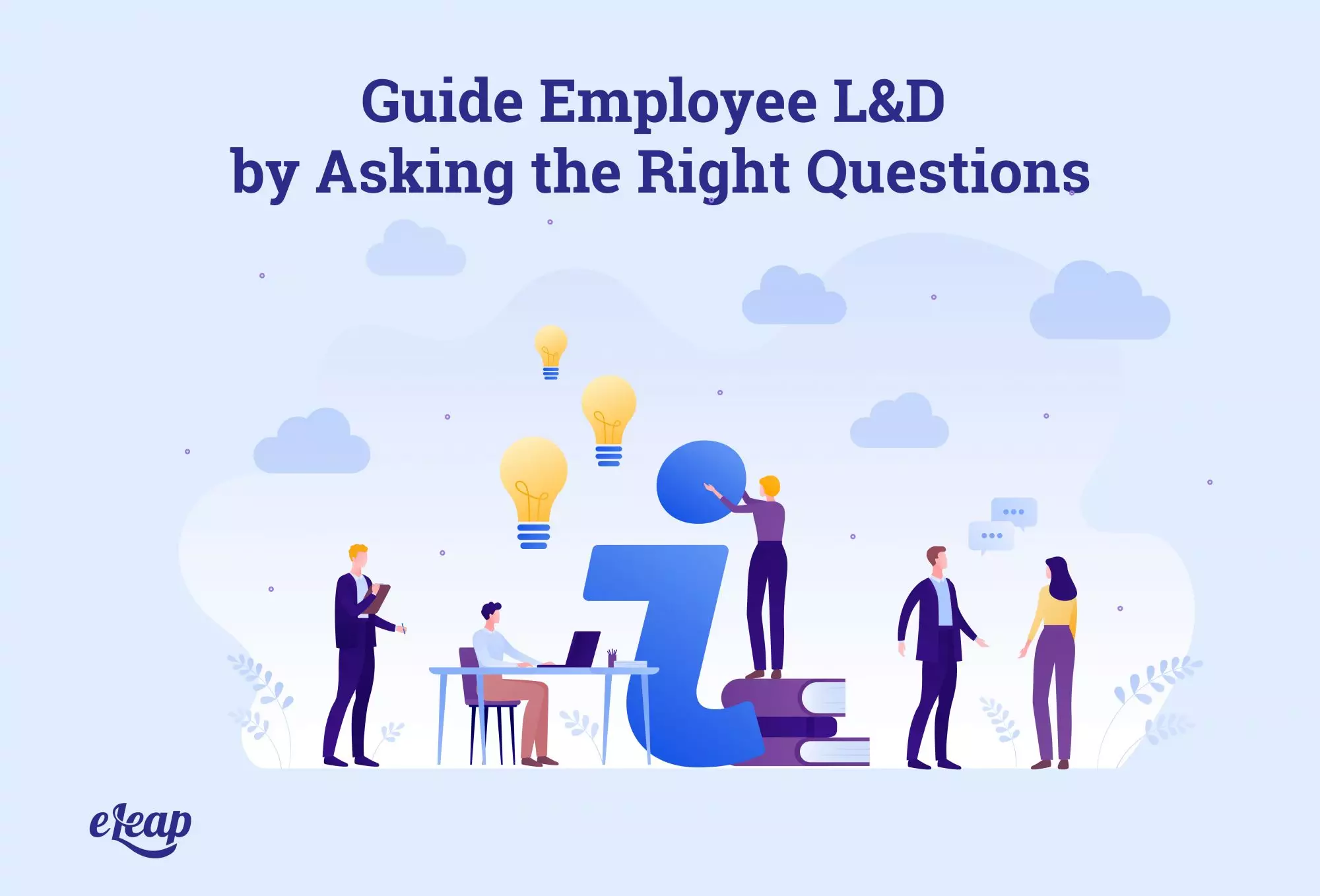Guide Employee L&D by Asking the Right Questions

Struggling to get your employees on board with learning and development? Not sure how to create learning paths that offer value, traction, and rewards for your learners? You’re not alone – it’s a common challenge, but it doesn’t have to be your fate.
There are quite a few ways that you can change how L&D works in your organization and go from an afterthought to something that your learners look forward to. One of those ways is to guide their development by regularly asking questions. It’s very similar to how you conduct check-ins with employees.
However, you need to ask the right questions and be able to read into your team members’ answers. With a little insight and the right information, you can guide employee L&D. In this post, we’ll explore what you should know and what questions to ask.

Do you feel that the training and development being offered provides you with value?
This question can shed light on many important things. If the employee answers “yes”, then you can drill down farther by asking what they value the most. If they say “no”, then you have the opportunities to improve your L&D offerings, as well as to connect the dots for your learners and showing them how the content is relevant to them and their future.
What skills do you need to succeed in your current position? Do you feel that the training you’re receiving helps you build those skills?
If your training and development doesn’t offer employees the ability to build necessary skills, then you’re just wasting everyone’s time. You’re doing nothing but going through the motions. Use this information to help tailor your training so that you’re able to equip your people with the skills necessary not just for their success but for the success of the business itself.
What are your career goals?
You cannot create an L&D path if you don’t know where your employees want to go. Sure, you can plan to move this person to that position, and possibly to another one later. You can plan for this person to move onto this team, and so on.
The problem here is if they don’t actively want to make those moves, then you’re just shuffling the deck for no real purpose. If the career paths employees follow aren’t what they want, then why should they remain with your company? By asking what each employee wants in terms of their career, you can create customized paths that help them develop the skills they need for success, and then tailor your hiring and internal promotion strategy around those goals. Ultimately, everyone wins.
What do you feel is preventing you from learning new skills?
It’s important to identify roadblocks and challenges that your employees encounter. Doing so can shed light on some pretty critical things. For instance, if they feel that they don’t have the time to complete any training, then it’s possible to reassess their workload, or perhaps check into the amount of time required for each learning session and perhaps “chunk” larger sessions into smaller, micro sessions.
Do you feel that you have the skills necessary for your position?
You cannot simply assume that employees have the skills necessary to do what their position demands. While they might have the baseline requirements, that doesn’t mean that they have all the required abilities. By asking this question, you can identify skills gaps and then create learning and development plans that help to close them. You make your employees more capable and confident, and to raise the entire organization at the same time.
What do you want to learn?
Never underestimate the power of individual goals, desires, and values. That’s particularly true when it comes to L&D. Asking your employees what they want to learn can shed a lot of light on their underlying goals and motivations. It can also help you create customized learning paths that are perfectly suited to each individual. It also helps ensure that your learners can see the value in lessons immediately, increase buy-in, and make sure you have the information necessary to create a structured hiring strategy that moves the business forward.
Do you believe there are good career advancement opportunities for you in this organization?
The right learning and development opportunities can dramatically impact how your employees see the organization and their future within it. If you offer courses and modules that support their growth and development in their areas of interest, then they’re more likely to answer the question affirmatively and to remain with you for longer. That reduces churn, onboarding costs, time spent developing new works, and other major expenses. However, if they answer negatively, you need to delve into why that’s the case and what needs to be done to change their perception.
Do you feel that you have easy access to L&D material?
If you don’t make it easy for your learners to complete modules and lessons, they’re not going to be all that excited about moving forward. Find out what they think and then take action. Examples of how you might make things easier include focusing on mobile accessibility (completing courses on tablets or smartphones), gamification, content chunking, microlearning, and more.
Do you feel that the content takes your background into account?
Your employees come from a wide range of ethnic and cultural backgrounds. This can impact learning and development in many ways. Your content needs to be tailored to those differences. Doing otherwise is a mistake. It’s rare to have successful L&D content that is also one-size-fits-all.
Put Those Answers to Use
Once you have the answers to these questions, don’t stop. You need to put that information to use. Create tailored paths for your learners, design courses that support them in their career goals, make your content more accessible for everyone, and build a better system that supports success for all.